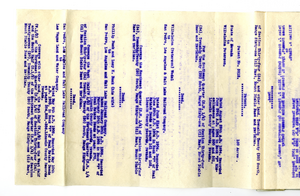Search the Special Collections and Archives Portal
Search Results
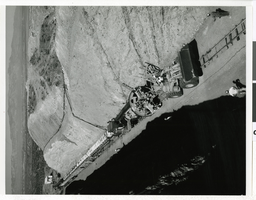
Photograph of the 988 caterpillar loader towing mole and conveyor to the tunnel portal used on the Las Vegas River Mountain Project, Las Vegas, Nevada, circa 1968-1971
Date
Archival Collection
Description
Image
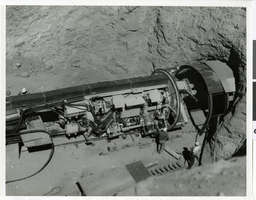
Photograph of the outlet portal showing the mole preparing to walk into the tunnel on the Las Vegas River Mountain Project, Las Vegas, Nevada, circa 1968-1971
Date
Archival Collection
Description
Image
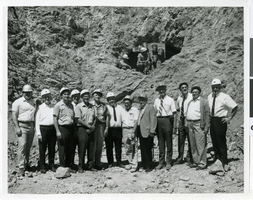
Photograph of Key federal, state and contractor representatives who were on hand when the mole broke through the tunnel, Las Vegas, Nevada, 6-26-69
Date
Archival Collection
Description
Image
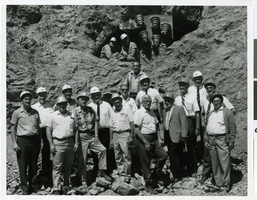
Photograph of Key federal, state and contractor representatives who were on hand when the mole broke through the tunnel, Las Vegas, Nevada, 6-26-69
Date
Archival Collection
Description
Image
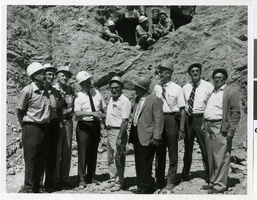
Photograph of Key federal, state and contractor representatives who were on hand when the mole broke through the tunnel, Las Vegas, Nevada, 6-26-69
Date
Archival Collection
Description
Image

Letter from C. A. Earle Rinker to his sisters, undated (ca. 1907)
Date
Archival Collection
Description
Text
Molasky, Irwin
Irwin Molasky (1927-2020) is a Las Vegas, Nevada real estate developer and chairman of the Molasky Group of Companies. He was involved in many major Las Vegas development projects including Paradise Palms, Sunrise Hospital, Nathan Adelson Hospice, the University of Nevada, Las Vegas (UNLV), the Boulevard Mall, Bank of America Plaza, Regency Towers, and Park Towers.
Person
University of Nevada, Las Vegas School of Medicine Press Clippings and Publicity Collection
Identifier
Abstract
The University of Nevada, Las Vegas School of Medicine Press Clippings and Publicity Collection is comprised primarily of newspaper clippings and magazine articles from 2013 to 2015 covering the development of a medical school at UNLV. The collection materials include op-eds on UNLV's School of Medicine and articles discussing funding, development, and administration for the school. This collection also includes a copy of the
Archival Collection
Arlene Mathews Smith Photograph Collection
Identifier
Abstract
The Arlene Mathews Smith Photograph Collection (1910-1945) is comprised of photographs of people and places in and around Panaca, Nevada. The collection contains a photograph album featuring Smith, her family and friends, and various residents and events around the area. Included as part of the collection are photographs from the Last Frontier Hotel in Las Vegas, Nevada.
Archival Collection

